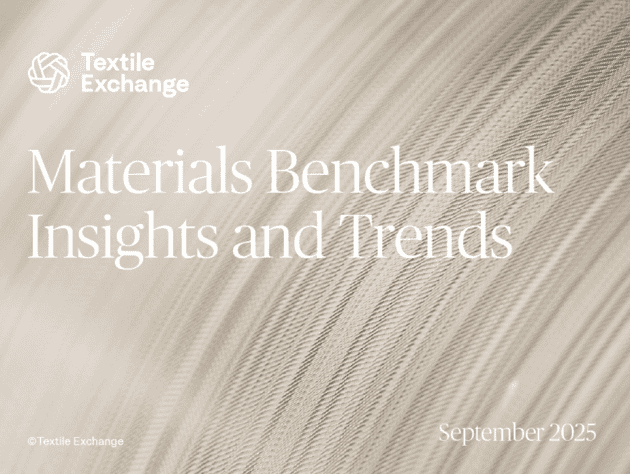Materials Benchmark Insights and Trends 2025

Discover some of the key insights and trends from Textile Exchange’s Materials Benchmark.
The Materials Benchmark is the largest peer-to-peer comparison initiative in the fashion, textile, and apparel industry. Every year, it tracks the uptake of fibers and raw materials from recognized programs, as well as how companies are addressing areas like circularity, biodiversity, land, freshwater, and forests.
To explore aggregated data and trends from participating brands and retailers, we have compiled a factsheet that provides key insights into the state of the sector.
The Materials Benchmark is open to all companies that want to measure and report their fiber and raw material-related progress. However, it is important to note that the data in this factsheet refer to companies that report into the Materials Benchmark only, which far outperform the industry as a whole in terms of their sustainability progress.
Explore the insights
Dive deeper into how companies that reported into the 2025 Materials Benchmark cycle are addressing climate and nature through their raw material sourcing.

The key takeaways
The number of reporting brands and retailers (including subsidiaries) increased from 57 in 2015 to a record 423 in 2025. Among the subsets of brands that reported data on specific fibers and materials for both 2023 and 2024:
- The share of raw materials under sustainability programs used by the reporting brands increased from 58% in 2023 to 67% in 2024.
- The share of raw materials certified under sustainability programs increased from 58% in 2023 to 67% in 2024.
- Virgin fossil-based polyester use decreased from 637,388 tonnes in 2023 to 560,029 tonnes in 2024.
- The share of brands that implemented measures to reduce impacts on climate and nature during raw materials production increased from 77% in 2023 to 81% in 2024.
- The percentage of brands with formal climate targets rose from 85% in 2023 to 88% in 2024.